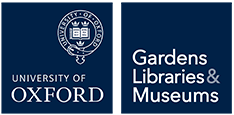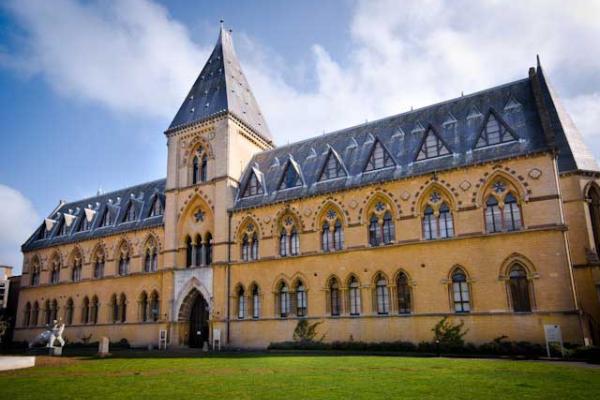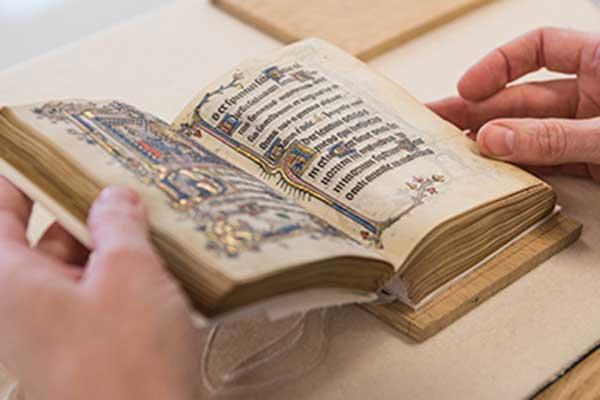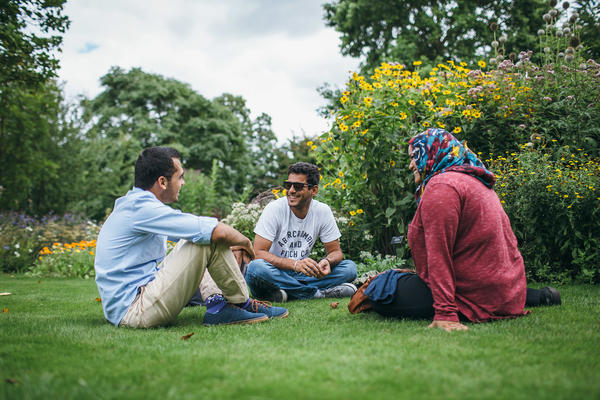Collaborative doctoral studentships
About GLAM's collaborative doctoral research
Apply to co-supervise a collaborative doctoral project
Current GLAM collaborative doctoral researchers
Current projects
About GLAM's collaborative doctoral research
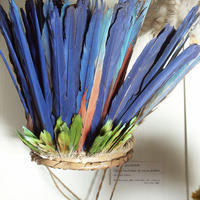
Oxford University Gardens, Libraries and Museums (GLAM) co-supervise a number of collaborative doctoral studentship projects which are funded by UKRI collaborative doctoral award and doctoral training partnership schemes, by funders including the Arts and Humanities Research Council (AHRC) and the Economic and Social Research Council (ESRC). See below for details of GLAM collaborative doctoral projects.
Each collaborative doctoral studentship is jointly supervised in partnership between one or more of our GLAM institutions and academics from UK Higher Education Institutions (HEI).
Oxford GLAM's AHRC Collaborative Doctoral Partnership (CDP) began in October 2016 with studentships open to the Ashmolean Museum, History of Science Museum, Museum of Natural History and the Pitt Rivers Museum (CDP 2). From 2020 the programme widened to allow studentships to be supervised by staff from Oxford Botanic Garden & Arboretum, and the Bodleian Libraries (CDP 3).
For general enquiries about Oxford University GLAM collaborative doctoral awards please contact Dr Harriet Warburton (harriet.warburton@glam.ox.ac.uk).
For enquiries about specific projects please contact the project supervisors named below.
Apply to co-supervise a collaborative doctoral project
Collaborative doctoral projects have been transformational for GLAM. They are producing research that helps us to develop new perspectives on our collections and they are helping to train a new generation of scholars working between the academic and heritage sectors.
GLAM is very keen to continue to co-supervise collaborative doctoral studentship projects and we strongly encourage GLAM colleagues to apply to the many collaborative doctoral studentship schemes on offer:
- AHRC CDP 4 (Arts & Humanities Research Council Collaborative Doctoral Partnership)
- AHRC DTP 2 (Arts & Humanities Research Council Doctoral Training Partnerships 2)
- AHRC DTP Open-Oxford-Cambridge
- BBSRC DTP 2020-24 (Biotechnology and Biological Sciences Research Council Doctoral Training Partnerships)
- ESRC DTP 2024 to 2028 (Economic and Social Research Council Doctoral Training Partnership contacts)
- ESRC Grand Union DTP (Brunel University London, The Open University and the University of Oxford)
- NERC DTP (Natural Environment Research Council Doctoral Training Partnerships) - details tbc
The links above take you to overview pages for each scheme on the UKRI website. These contain lists of consortia who offer collaborative doctoral training opportunities (with additional links) from which you should find information on how to submit a proposal (NB the list above is not exhaustive).
How to apply
- Check scheme deadlines: Deadlines for proposals are variable so please check scheme webpages for latest information and deadlines.
- Check your eligibility: Eligibility for each scheme is slightly different, therefore you should check the scheme notes carefully. GLAM will usually be the non-HEI collaborating partner on the project or can be secondary supervisor if working with an Oxford University Academic Division (because GLAM can’t matriculate students). Contact the scheme administrator before applying to ensure your eligibility as a GLAM researcher.
- Co-develop the application with your HEI partner. You should ask the partner what their internal process is.
- Obtain GLAM internal approval: Before applying, you must liaise with your line manager to ensure that there is enough capacity and resource to be able to co-supervise the studentship (which will not bring any funds to your GLAM department but may require a financial contribution towards student research expenses).
- Secure financial contribution (if required): Depending on the scheme, the lead HEI usually administers the studentship, receiving funds for the student’s fees and maintenance. In addition to the full studentship award, GLAM departments may provide up to £2,000 per annum per student (pro rata) to cover the costs of travel between the HEI and Oxford, and related costs in carrying out research. You must liaise with your departmental Head of Finance and/or line manager to ensure that funds will be available if required.
- Get support with your application: Get in touch with Hattie Warburton (harriet.warburton@glam.ox.ac.uk) and/or Emma Webster (emma.webster@glam.ox.ac.uk) in the GLAM Research and Impact Support Team if you are thinking about applying to collaborate on a studentship project and would like support in your application, and/or if you have any questions about collaborative doctoral studentships more widely.
(Please note this is not a call for proposals directly from students. If you are a potential collaborative doctoral student then studentships are often advertised on jobs.ac.uk and on host higher education institutions’ websites.)
2025 collaborative doctoral student projects at Oxford University Gardens, Libraries and Museums
-
Digital Approaches to Medieval Chant and Local Religious Heritage
AHRC Midlands4Cities Collaborative Doctoral Award (CDA) student, supervised by Dr Henry Parkes and Dr Rob Lutton, University of Nottingham, and Dr Andrew Dunning and Dr Peter Toth, Bodleian Libraries, University of Oxford
-
Evaluating the Influence of Tangible 3D Printed Replicas on the Museum Experience
AHRC-funded GLAM CDP student, supervised by Professor Mark Williams and Dr Paula Wilson, University of Warwick, and Janet Stott and Dr Duncan Murdock, Museum of Natural History, Oxford University
2024 collaborative doctoral student projects at Oxford University Gardens, Libraries and Museums
-
Elena Trowsdale (Open University and Oxford University Gardens, Libraries and Museums (GLAM) Division)
Supervised by Dr Jaspal Singh (Open University), Dr Sally Hunt (Open University), Dr Megan Gooch (Bodleian, Oxford), Professor David De Roure (Oxford University), Helen Adams (GLAM Division, Oxford)
2023 collaborative doctoral student projects at Oxford University Gardens, Libraries and Museums
-
Renée Trepagnier (University of Bristol in partnership with the Ashmolean Museum, Oxford)
AHRC-funded GLAM CDP student, supervised by Professor Nicoletta Momigliano and Dr Shelley Hales (Bristol); Dr Andrew Shapland and Dr Eleanor Standley (Ashmolean, Oxford)
-
Rose Karpinski (University of Reading, in partnership with the Ashmolean Museum)
AHRC-funded GLAM CDP student, supervised by Dr Peter Pray and Professor Duncan Garrow (University of Reading) and Dr Courtney Nimura and Dr Kelly Domoney (Ashmolean Museum)
2022 collaborative doctoral student projects at Oxford University Gardens, Libraries and Museums
-
Amalia Wickstead (UCL, in partnership with the Ashmolean Museum, University of Oxford)
AHRC-funded GLAM CDP student, supervised by Professor Phiroze Vasunia (UCL) and Dr Milena Melfi and Dr Shailendra Bhandare (Oxford)
-
Centring the marginal: Western medieval manuscript fragments in the Bodleian Library
Jemima Bennett (University of Kent, in partnership with the Bodleian Libraries, University of Oxford)
AHRC-funded GLAM CDP student, supervised by Dr David Rundle and Dr Emily Guerry (Kent) and Matthew Holford and Nicole Gilroy (Oxford)
2021 collaborative doctoral student projects at Oxford University Gardens, Libraries and Museums
-
Anna Sephton (University of Brighton, in partnership with the Pitt Rivers Museum/African Studies Centre, University of Oxford)
AHRC-funded GLAM CDP student, supervised by Professor Darren Newbury and Dr Julia Winckler (Brighton) and Dr Chris Morton and Professor Jonny Steinberg (Oxford)
-
Shreya Gupta (University of Exeter, in partnership with the Ashmolean Museum, University of Oxford)
AHRC-funded GLAM CDP student, supervised by Professor Nandini Chatterjee and Professor Nicola Thomas (Exeter) and Dr Shailen Bhandare (Oxford)
-
Coming Out of the Shadows: Women and Geology in Oxford, 1813-1914
Grace Exley (University of Leeds, in partnership with Oxford University Museum of Natural History)
AHRC-funded GLAM CDP student, supervised by Dr Jon Topham and Professor Graeme Gooday (Leeds) and Eliza Howlett and Professor Paul Smith (Oxford)
-
Hye Lim (Joy) Nam (University of Glasgow, in partnership with the Bodleian Libraries)
AHRC-funded Scottish Graduate School for Arts and Humanities (SGSAH) CDA student, supervised by Professor Paul Gooding and Professor Lorna Hughes (Glasgow), and Dr Frankie Wilson (Oxford)
-
Culture-led wellbeing: investigating the changing skills of the cultural workforce
Amisha Karia (University of Leicester, in partnership with Oxford University Gardens, Libraries and Museums)
ESRC-funded Midlands Graduate School DTP student, supervised by Professor Richard Sandell and Dr Nuala Morse (Leicester) and Dr Hattie Warburton (Oxford)
2020 collaborative doctoral student projects at Oxford University Gardens, Libraries and Museums
- Biocultural knowledge, power and poetics in South American featherwork
Rosa Dyer (Birkbeck College, University of London, in partnership with the Pitt Rivers Museum, Oxford)AHRC-funded GLAM CDP student, supervised by Professor Luciana Martins and Dr Carmen Fracchia (Birkbeck); Dr Laura Van Broekhoven, Professor Andrew Gosler and Jeremy Uden (Oxford)
- The Duchess of Botany: Mary Somerset, Jacob Bobart, and the Formation of the Oxford Botanic Garden
India Cole (Queen Mary University of London in collaboration with Oxford Botanic Garden)AHRC-funded GLAM CDP student, supervised by Dr Richard Coulton and Professor Markman Ellis (Queen Mary); Professor Simon Hiscock and Dr Chris Thorogood (Oxford)
- Early Modern Copper Plates at the Bodleian Libraries
Chiara Betti (School of Advanced Study, UoL, in collaboration with the Bodleian Libraries)AHRC-funded GLAM CDP student, supervised by Dr Elizabeth Savage and Dr Laura Cleaver (London) and Dr Alexandra Franklin and Mike Webb (Oxford)
- Gender and Arctic field science
Nai Zakharia (University of Cambridge, in collaboration with Oxford University Museum of Natural History)AHRC Open-Oxford-Cambridge DTP student, supervised by Professor Richard Powell (Cambridge) and Professor Paul Smith (Oxford)
2019 collaborative doctoral student projects at Oxford University Museums
- The evaluation of museum engagement: User Centred Design principles and the development of audience-focussed interpretation
Ellie King (University of Warwick in partnership with Oxford University Museum of Natural History)AHRC Collaborative Doctoral Partnership student, supervised by Professor M Paul Smith at Oxford University Museum of Natural History and Professor Mark Williams and Dr Paul Wilson at Warwick Manufacturing Group (WMG) at University of Warwick
- The Iron Age to Roman transition in Britain from the perspective of coin hoards
Anni Byard (University of Leicester and the Ashmolean Museum, Oxford)
AHRC Collaborative Doctoral Partnership student, supervised by Prof. Colin Haselgrove and Prof. David Mattingly (Leicester), Prof. Chris Howgego and Prof. Chris Gosden (Oxford)
- Material cultures of refuge in Lebanon
Hadiqa Khan (University College London (UCL) and Pitt Rivers Museum, Oxford)
AHRC Collaborative Doctoral Partnership student, supervised by Dr Matthew Davies and Dr Hanna Baumann (University College London, UCL), Professor Dan Hicks (Pitt Rivers Museum) and Dr Letty Ten Harkel (School of Archaeology, University of Oxford)
-
Science in the service of religion? A museum study
Mathilde Daussy-Renaudin (University College London (UCL) in partnership with the History of Science Museum in Oxford)
AHRC Collaborative Doctoral Partnership student, supervised by Dr Silke Ackermann (Oxford) and Professor Michael J. Reiss (London)
-
Boundaries of the Book in a Digital Age
Justine Provino (University of Cambridge in partnership with the Bodleian Libraries)
AHRC Collaborative Doctoral Award, Open-Oxford-Cambridge DTP student, supervised by Dr Jason Scott-Warren (Faculty of English, University of Cambridge), and by Dr Christopher Fletcher (Bodleian Libraries, University of Oxford).
2018 collaborative doctoral student projects at Oxford University Museums
- The Nature of Replication: Re-contextualizing Natural History Models and Casts from 19th to early 20th century Britain and beyond
Elaine Charwat (University College London) in partnership with the Oxford University Museum of Natural History
AHRC-funded GLAM CDP student, supervised by Dr Alice Stevenson (UCL) and Mark Carnall (OUMNH) - Museum Collections, Academic Teaching, and the Making of Geology in the Nineteenth-Century University
Susan Newell (University of Leeds in partnership with the Oxford University Museum of Natural History and the Ashmolean Museum)
AHRC-funded GLAM CDP student, supervised by Dr Jon Topham (Leeds), Ms. Eliza Howlett (Head of Earth Collections, Oxford University Museum of Natural History) and Dr Jim Harris (Ashmolean Museum)
2017 collaborative doctoral student projects at Oxford University Museums
- Archaeological Plaster Casts: In Search of Authenticity
Abbey Ellis (University of Leicester in partnership with the Ashmolean Museum)
AHRC-funded GLAM CDP student, supervised by Dr Sandra Dudley (Leicester), Dr Milena Melfi and Professor Bert Smith (Oxford) - Where Art and Science Meet: Art and Design at the Oxford University Museum of Natural History
Helen Goulston (University of Birmingham in partnership with the Oxford University Museum of Natural History)
AHRC-funded GLAM CDP student, supervised by Dr Claire Jones (Birmingham) and Professor Paul Smith (Oxford) - Visual Archaeology: the photographic character of the archaeology of OGS Crawford
Beth Hodgett (Birkbeck, University of London in partnership with the Pitt Rivers Museum)
AHRC-funded GLAM CDP student, supervised by Dr Lesley McFayden and Dr Jennifer Baird (Birkbeck) and Professor Chris Gosden and Dr Chris Morton (Oxford)
2016 collaborative doctoral student projects at Oxford University Museums
- Gold Coinage in the Roman World
George Green (University of Warwick in collaboration with the Ashmolean Museum)
AHRC-funded GLAM CDP student, supervised by Professor Kevin Butcher (Warwick), Professor Christopher Howgego and Professor Mark Pollard (Oxford) - Modernization, cultural exchanges and innovation in Russian print culture: St Petersburg in the Talbot Collection
Emily Roy (University of Cambridge in collaboration with the Ashmolean Museum)
AHRC-funded GLAM CDP student, supervised by Dr Rosalind Blakesley and Dr Wendy Pullan (Cambridge) and Professor Catherine Whistler (Oxford)
